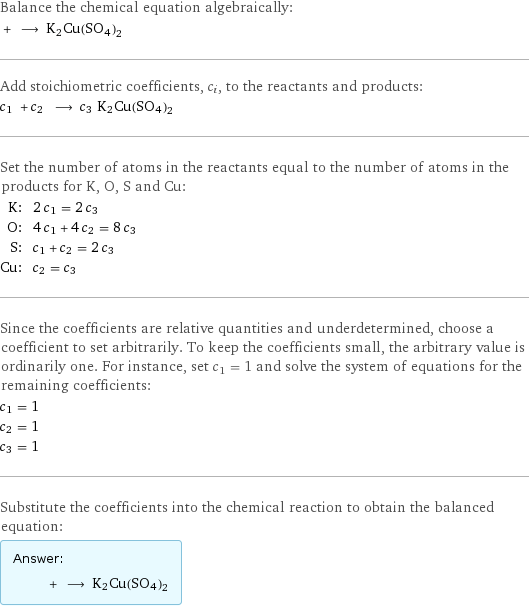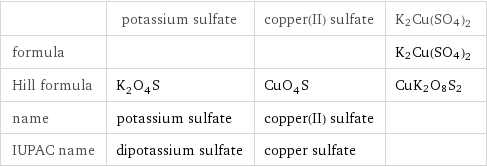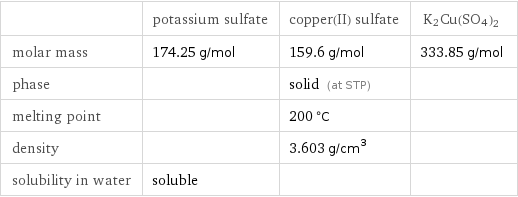Input interpretation

potassium sulfate + copper(II) sulfate ⟶ K2Cu(SO4)2
Balanced equation

Balance the chemical equation algebraically: + ⟶ K2Cu(SO4)2 Add stoichiometric coefficients, c_i, to the reactants and products: c_1 + c_2 ⟶ c_3 K2Cu(SO4)2 Set the number of atoms in the reactants equal to the number of atoms in the products for K, O, S and Cu: K: | 2 c_1 = 2 c_3 O: | 4 c_1 + 4 c_2 = 8 c_3 S: | c_1 + c_2 = 2 c_3 Cu: | c_2 = c_3 Since the coefficients are relative quantities and underdetermined, choose a coefficient to set arbitrarily. To keep the coefficients small, the arbitrary value is ordinarily one. For instance, set c_1 = 1 and solve the system of equations for the remaining coefficients: c_1 = 1 c_2 = 1 c_3 = 1 Substitute the coefficients into the chemical reaction to obtain the balanced equation: Answer: | | + ⟶ K2Cu(SO4)2
Structures

+ ⟶ K2Cu(SO4)2
Names

potassium sulfate + copper(II) sulfate ⟶ K2Cu(SO4)2
Chemical names and formulas

| potassium sulfate | copper(II) sulfate | K2Cu(SO4)2 formula | | | K2Cu(SO4)2 Hill formula | K_2O_4S | CuO_4S | CuK2O8S2 name | potassium sulfate | copper(II) sulfate | IUPAC name | dipotassium sulfate | copper sulfate |
Substance properties

| potassium sulfate | copper(II) sulfate | K2Cu(SO4)2 molar mass | 174.25 g/mol | 159.6 g/mol | 333.85 g/mol phase | | solid (at STP) | melting point | | 200 °C | density | | 3.603 g/cm^3 | solubility in water | soluble | |
Units
